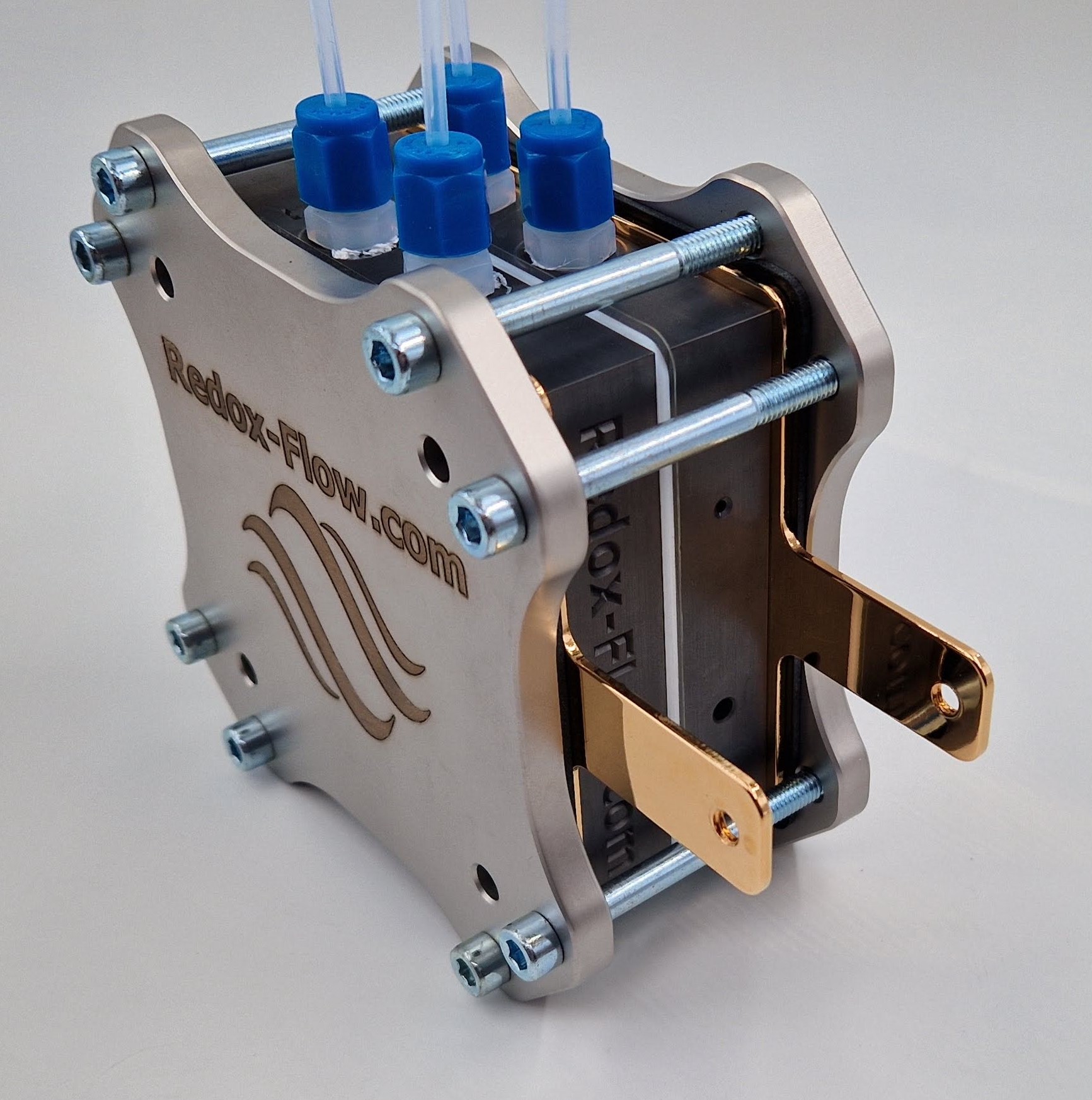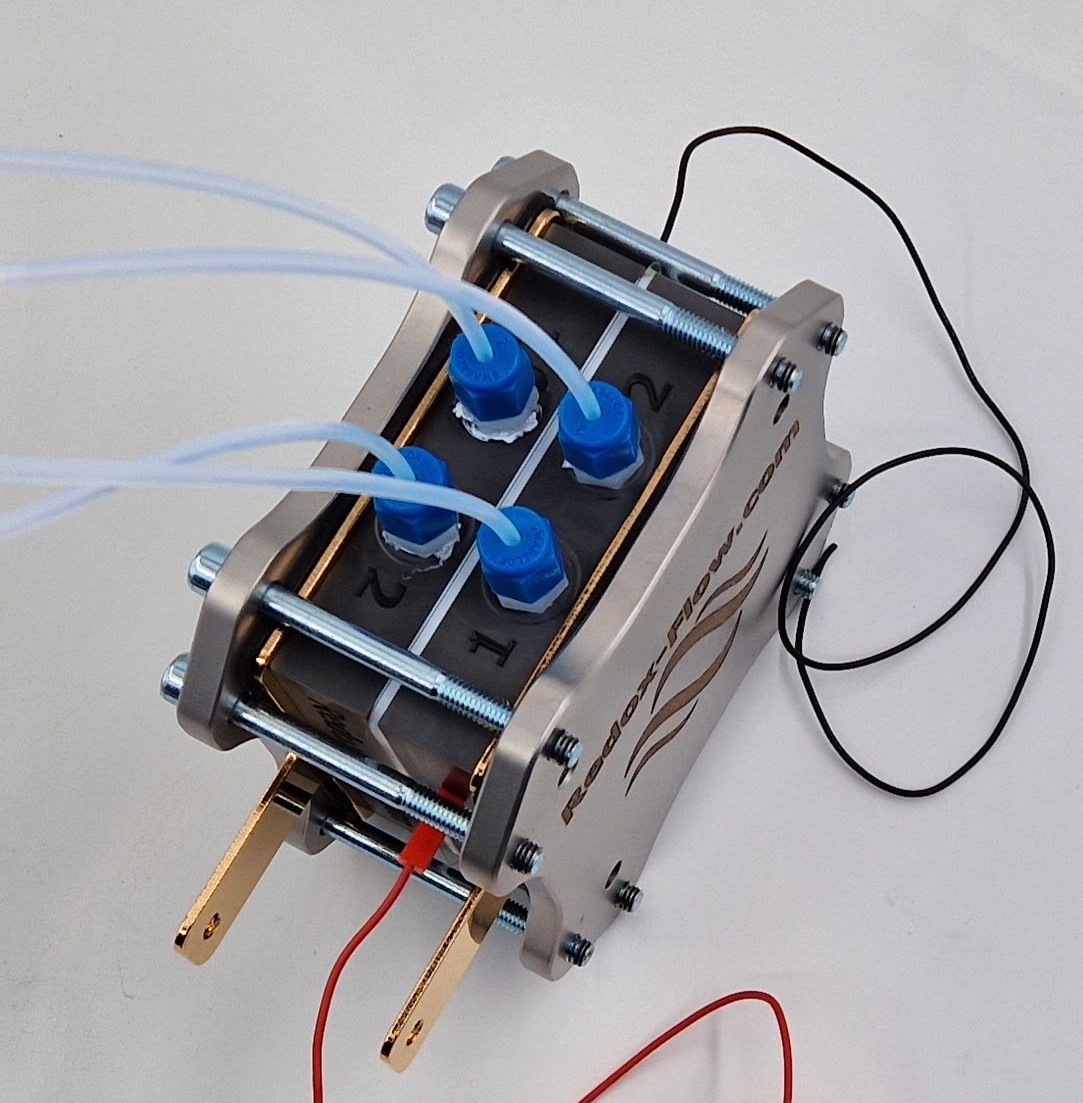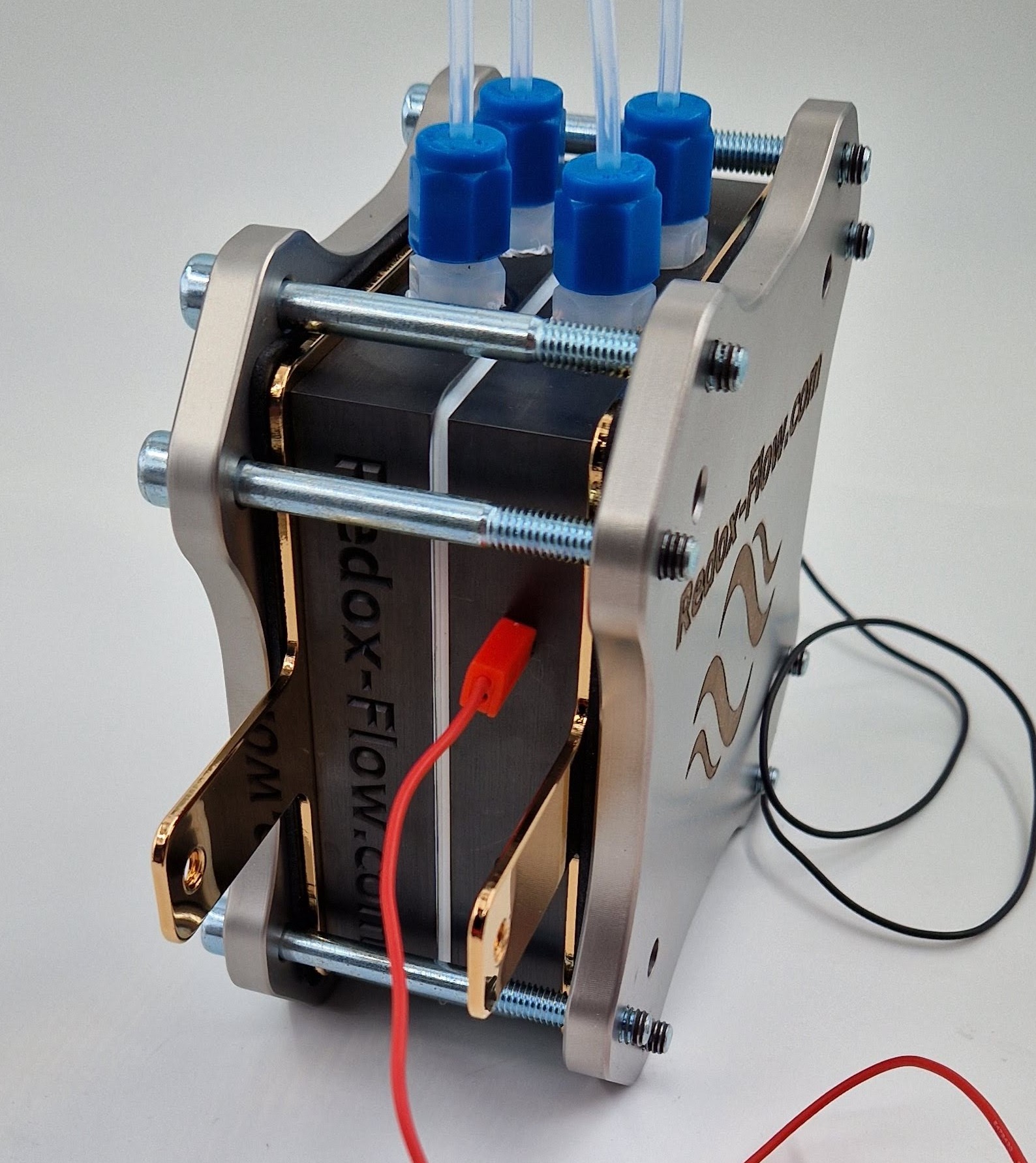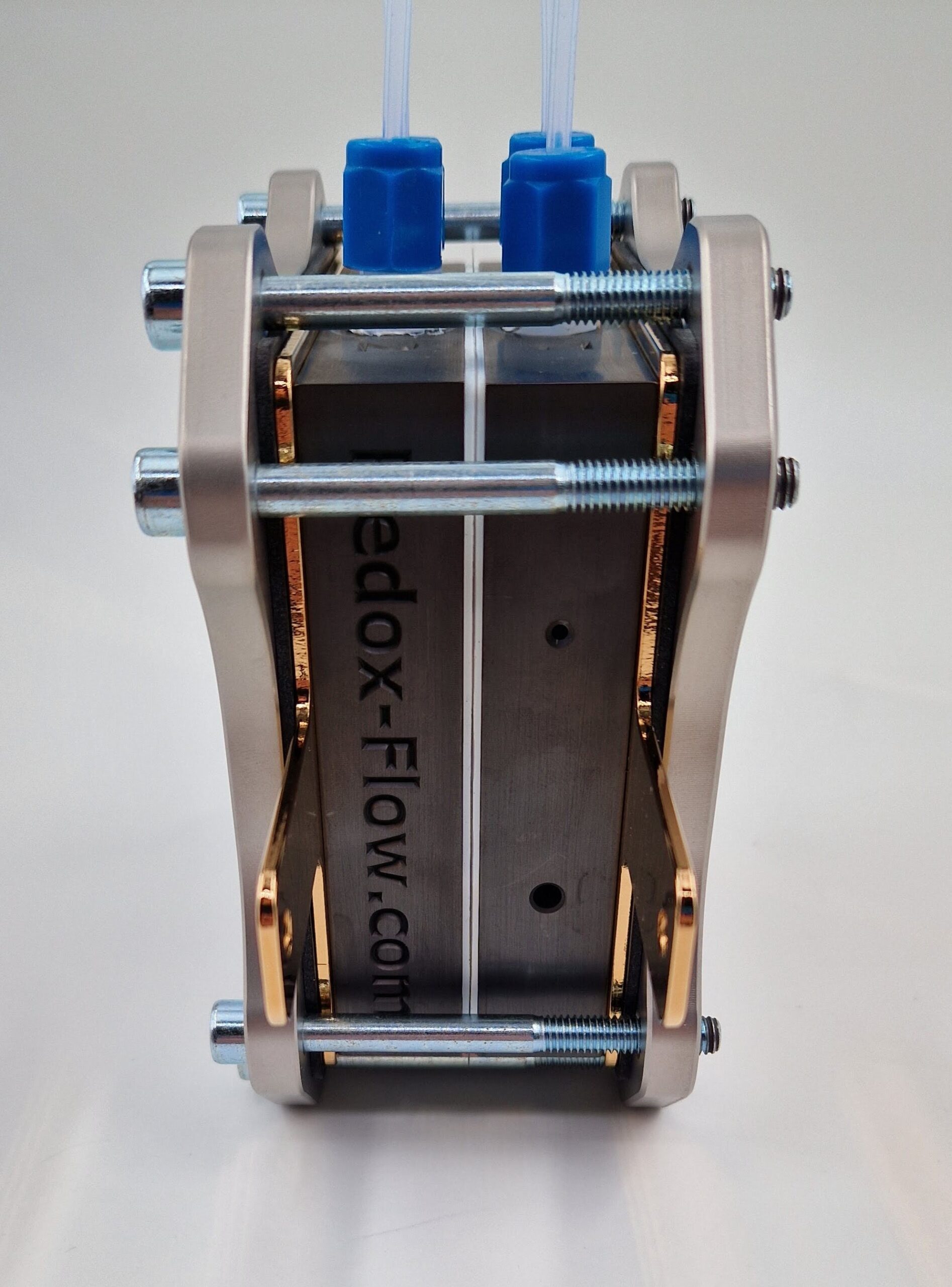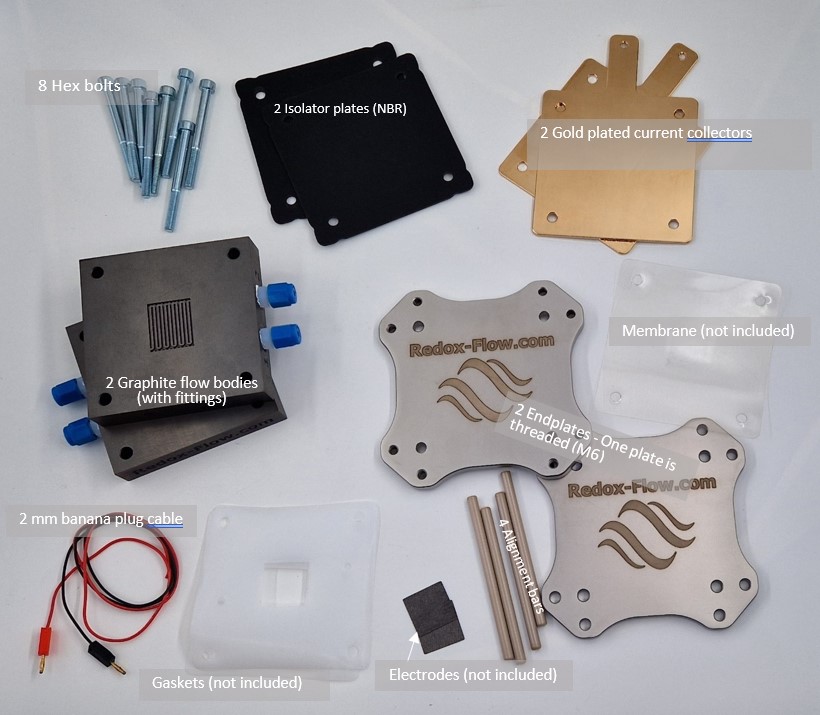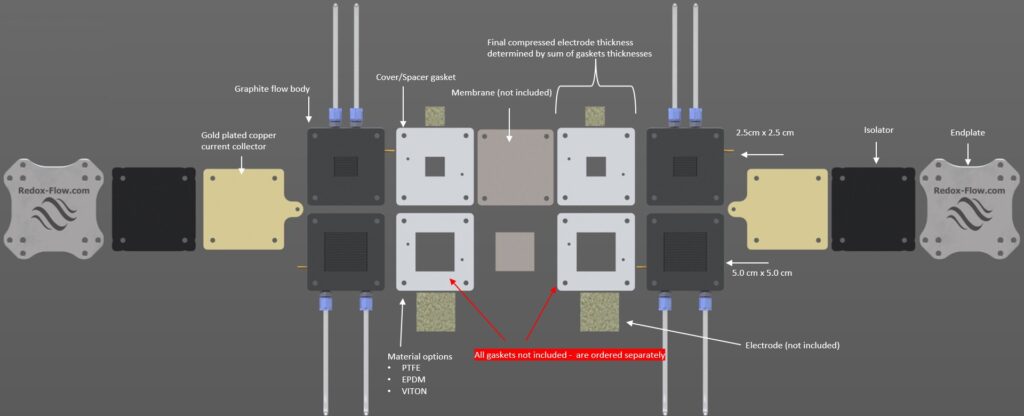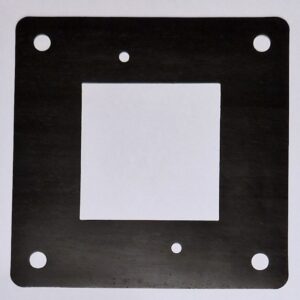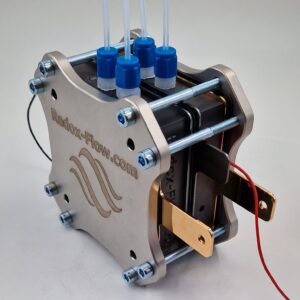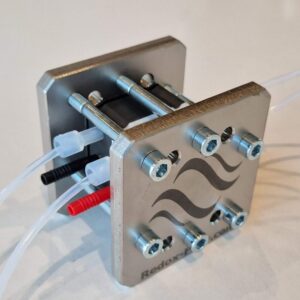DESCRIPTION: The A-cell was the first product of Redox-Flow.com and has been on the market for almost 10 years and is being used by +100 groups and companies around the world. The A-cell comes with interdigitated flow field and is intended for general redox flow battery research and development in particular thinner electrodes <0.5mm-1 mm. Alternatively it can be used an electrochemical flow cell for test of membrane properties or similar. The A-cell comes with either 2.5cm x 2.5 cm OR 5cm x 5cm active area
The design has focused on ease of use and fast assembly/disassembly making it ideal for research applications. The cell consists of corrosion resistant dense graphite material with close to zero absorption of electrolyte. There is no contact between metal parts and electrolyte solutions. The interdigitated flow field in the cell is optimized for RFB applications with minimum internal resistance. For specialized flow fields or carbon felt electrodes and other active areas please contact us.
Some of the unique features of the A-cell are
- Optimised for high performance and lowest internal resistance
- Can be connected with Flow Through Electrode Holder (Flow through electrode holder) for e.g. inline monitoring of pH, ORP, reference, conductivity or any other electrode.
- Can be connected the Inline Pressure Unit (Inline pressure unit) for measurement of electrode hydraulic resistance
- Signals from pressure sensors and electrodes can be recorded in AUX Unit (AUX Unit), which combined form an extremely powerful tool for both optimisation studies or flow battery chemistry development.
- The electrolyte is only in contact with flow block (graphite), spacers (PTFE, Viton or EPDM), O-ring (Viton/EPDM), bipolar plate, electrode and membrane.
- Can be converted into a A or X-cell by purchase of S-cell graphite flow body or X-cell PEEK flow body & current collectors. Combined the A, S and X-cells allows virtually testing of any type of electrochemical energy conversion technologies – Flow batteries, Alkaline Water Electrolysis, Anion exchange membrane water electrolysis, Zero Gap electrolysis, PEM water electrolysis, CO2 electrolysis, PEM/Alkaline fuel cells – that can be operated to high temperatures and in the full pH range
GASKETS & ELECTRODE THICKNESS: Due to the many variations, cells are sold without gaskets that needs to be ordered individually (see gasket selections). The overall configuration and variation possibilities are shown in the image below – (Click on picture for higher resolution)
The A-cell is intended for thinner electrodes (< 0.5-1.0 mm), for thicker electrodes the S-cell is a better option. The electrode area (either 2.5cm x 2.5cm OR 5cm x 5cm) is determined by the gaskets. The final compressed electrode thickness is the sum of the thicknesses of the Cover/Spacer gaskets, here several gaskets (and materials) and thicknesses can be combined. In our gaskets products we offer packs of different gasket thicknesses, and we recommend these as these will allow you to test virtually any electrode thickness and compression. For the A-cell the gaskets can be ordered here: Cover/Spacer gaskets
TECHNICAL SPECIFICATIONS
- Active Area: 2.5cm x 2.5cm or 5cm x 5cm
- ø2 mm and ø4mm holes in each side of the graphite blocks for e.g. thermometers or banana plugs for measurement of potential on the graphite block.
- Flow Field Pattern: 1mm Interdigitated
- Stainless steel End Plates
- Gold plated cobber current collectors
- Swagelok fittings for tight connecting to 1/8” tubing (1/4″ or other fitting sizes on request)
- Gaskets Materials: PFTE, VITON and EPDM
OTHER RESOURCES
- Cell Assembly Manual
- Scientific publications
- Østedgaard-Munck, David Nicolas, et al. “Membrane-based electrokinetic energy conversion.” Materials today energy 5 (2017): 118-125.
- Østedgaard-Munck, David Nicolas, et al. “Data on flow cell optimization for membrane-based electrokinetic energy conversion.” Data in brief 15 (2017): 1-11.
- Østedgaard-Munck, David Nicolas, et al. “Steady state and dynamic response of voltage-operated membrane gates.” Membranes 9.3 (2019): 34.
- Østedgaard-Munck, David Nicolas, et al. “Direct Measurements of Electroviscous Phenomena in Nafion Membranes.” Membranes 10.11 (2020): 304.
- Khataee, Amirreza, et al. “Differential pH as a method for increasing cell potential in organic aqueous flow batteries.” Journal of Materials Chemistry A 5.41 (2017): 21875-21882.
- Merino-Garcia, Ivan, et al. “Characterization of poly (Acrylic) acid-modified heterogenous anion exchange membranes with improved monovalent permselectivity for RED.” Membranes 10.6 (2020): 134.
- Bae, Dowon, et al. “Unravelling the practical solar charging performance limits of redox flow batteries based on a single photon device system.” Sustainable Energy & Fuels 3.9 (2019): 2399-2408.
- Clemente, Alejandro, et al. “Online state of charge estimation for a vanadium redox flow battery with unequal flow rates.” Journal of Energy Storage 60 (2023): 106503.

